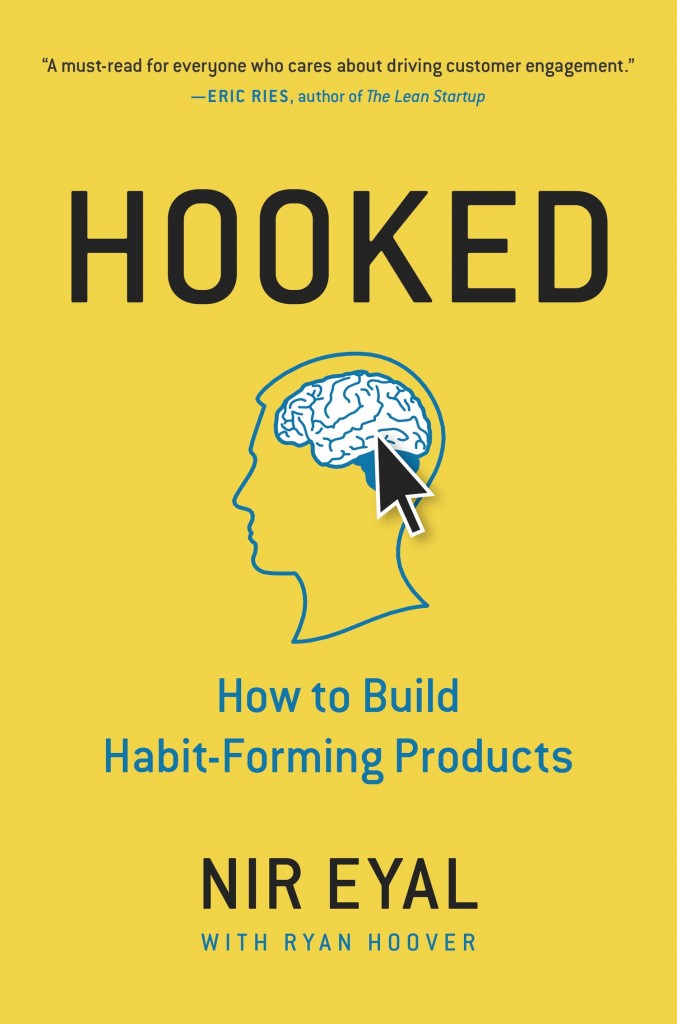 Hooked by Nir Ayal is a book in the same vein as The Power of Habit, but with a focus on how technology can be used to harness that power. “How to build habit forming products” the tagline says. The book has received critical acclaim, and made its way to a number of best of lists.
Hooked by Nir Ayal is a book in the same vein as The Power of Habit, but with a focus on how technology can be used to harness that power. “How to build habit forming products” the tagline says. The book has received critical acclaim, and made its way to a number of best of lists.
The book is not chiefly about understanding habits. In fact, having read The Power of Habit already, it was extremely easy to understand the implications of what Ayal was saying. But even if you hadn’t read it, you’d still walk away enriched–if you don’t make products, still this book will illuminate how the products you use are influencing you.
The data monsoon has given businesses an unprecedented understanding of how to influence habits, and the technology we carry around in our pockets, or sit in front of for work every day, have made installing those habits easier than ever. And all foreword thinking businesses are trying to figure out how to include some habitual element in what they provide to the customer, because habits affect the Customer Lifetime Value.
“Fostering consumer habits is an effective way to increase the value of a company by driving higher customer lifetime value (CLTV): the amount of money made from a customer before that person switches to a competitor, stops using the product, or dies. User habits increase how long and how frequently customers use a product, resulting in higher CLTV.”
Effective habits also influence the Viral Cycle Time of a product–or, the amount of time it takes someone to tell someone else about the product. The faster the better. By installing habits in users, this viral cycle time can be predicted with reasonable accuracy and the rate of growth can be parabolic, the business commanding larger swaths of customers while maintaining nimble strategy.
Perhaps the most important reason for businesses to understand, and attempt to harness the habitual behavior of their customers is that people have a tendency to put too much stock in what they already know. So the idea of making a better product isn’t good enough on its own. According to John Gourville, Eyal references, the products have to be 9 times better. In order to usurp existing habits people may have formed with their current solutions, new solutions have to create new habits to replace them, or else they have to make unrealistic improvements on existing solutions.
Hooked describes four phases of a habit–much like The Power of Habit’s “Habit Loop”. It starts with an internal or external trigger, such as a sound, sight, feeling or situation. The trigger prompts action. Provided there is enough motivation, the person has the ability to carry out the action, and the trigger was sufficiently delivered, the action will be carried out. Next, provided the motivation lead to a reward, and the reward is not the same every time, the ground is fertile to form a habit. But the final piece is both the beginning and the end of the cycle, which is investment. By asking a user to put in effort (step 4), you build the framework for the trigger to be effective (step 1).
The four phases in Eyal’s book are in a transient order. Step 1 and step 4 might be interchangeable, depending on how you look at it.
Toward the end of the book, Eyal took time to discuss the ethics of building products and services that hack at people’s psychological security. It’s a fine line and I’m not sure his discussion was really sufficient. Business owners and start ups shouldn’t consider this the end of the debate.
Hooked is made up of eight chapters which took me between 15 and 30 minutes to read. They were easy enough to understand and Eyal’s writing style is not distracting. I highly recommend it.

Recent Discussion